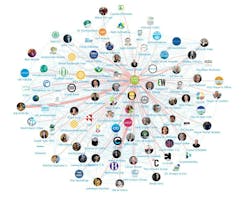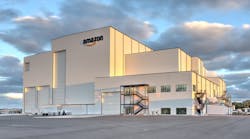Social media synergy: Revving up your AEC firm’s content engine
Social media offers design firms and individuals alike the opportunity to tailor their communications to the audiences they hope to reach and influence. Both have pluses and minuses. A firm can gain followers, but social media makes it very easy for individuals to reach others who share their specific interests.
Design firms know that just having a website and a blog aren’t enough, but social media complicates how they communicate.
So, let’s simplify things. For design firms, only two “strands” of communication really matter.
Strand 1 is how design firms have always communicated. Firms send out information through traditional channels (publications, newsletters, e-blasts, etc.) that convey their ethos and viewpoints, engage clients and influencers, and reach out to potential talent.
Strand 2 is as diverse as the individuals who participate in it. Their means and motives vary widely, but even in a professional or journalistic context, this is first-person communication by individual firm leaders to other individuals.
Tapping the synergy between the two strands is key to revving up your firm’s content engine. From the leaders on down, everyone associated with the firm is a potential contributor. Each is also a conduit to his or her own community, especially if he or she has followers willing to engage and share information.
Synergy is a byproduct of fruitful relationships—in this case, between a firm and its talented members. Individuals are a network of creators whose content you can curate and amplify. By taking communications as seriously as you take everything else, you’ll both set the tone and provide a platform for reaching wider audiences (and the publications that cater to them). By supporting your network of creators—and taking them seriously, providing media training for rising stars, and underwriting specific initiatives—you’ll be seen as an impresario, making It happen.
Influence, don’t control
Social media “flattens” the way your firm looks from the outside. Anyone associated with the firm can sometimes appear to be speaking for it. Simple rules to ensure client confidentiality, comply with workplace rules, and avoid embarrassment—coupled with media training—work better today than “command-and-control” diktat. Encourage not curb enthusiasm is the point.
Social media also increases the likelihood that internal communications will surface online. This is often inadvertent, but it’s a good reason to extend media training beyond traditional boundaries to encompass increasingly diverse forms of communication, from email to texts. And it enables loose cannons—even at the top, as we’re reminded daily. Tweet at your own risk.
Aim for substance
Content is still king. Online metrics don’t necessarily gauge true engagement. Don’t discount signs of resonance and recognition from influential others. When a client or journalist shares content approvingly with her own followers, that’s an indicator you can believe in.
Working the two strands creates a greater sum that reflects richer sources of good content and the added power of contributors with their own followers. Firms can add value to their efforts by curating the content and packaging it compellingly for a wider audience. You can also pull content together thematically so it can be pitched to important outlets and venues—just as you’ve probably always done. Individual contributors can then build on what’s communicated, adding their own comments or embedding it in new posts customized for themselves and their followers.
Embrace the new
Social media has also brought podcasts, narrated short videos, and virtual reality into the communications mix. This too is an arena for individual creative expression, with new online outlets actively seeking their output. Within design firms and outside of them, the “serious play” of experimentation is generating new content. There’s more interest in the unfinished—work that’s rough or in-progress. Creators can draw attention to their work and give it the right context and emphasis. Highlighting individuals with their proverbial boots on the ground gives a greater depth and stamp of authenticity to firmwide and individual communications that social media audiences demand. Social media activity by individual creators links their work with your firm’s brand and identity, an endorsement they’re likely to value.
Keep it simple—and real
The bedrock verities of design firm communications are unchanged by social media. Knowing and respecting your intended audiences—and editing and curating accordingly—is still your first priority. You can also tap into your network of talented collaborators to generate even more content that’s diverse, compelling, and relevant to their followers and yours.
This “virtuous circle” of mutual reinforcement gains substance from content that contributes to the discussions and debates current among clients and practitioners. Taking the time to identify shared audiences can help firms and their contributors map out strategies for reaching them with content that resonates and, because it emerges from the work itself, rings true externally.
About the Authors
Tami Hausman founded Hausman LLC in 2008 as a strategic advisor on communications to professional service firms and non-profit organizations. She engages architects and designers as clients and through lectures, publications, and active involvement in professional associations.
John Parman is senior advisor to Gensler. Formerly, he was the editorial director of Gensler’s communications studio, 1998–2017, overseeing its award-winning magazine, Dialogue, and its annual Design Forecast. He is on the Arcade editorial committee, and an editorial advisor to ORO Editions and U.C. Berkeley’s Room One Thousand.


